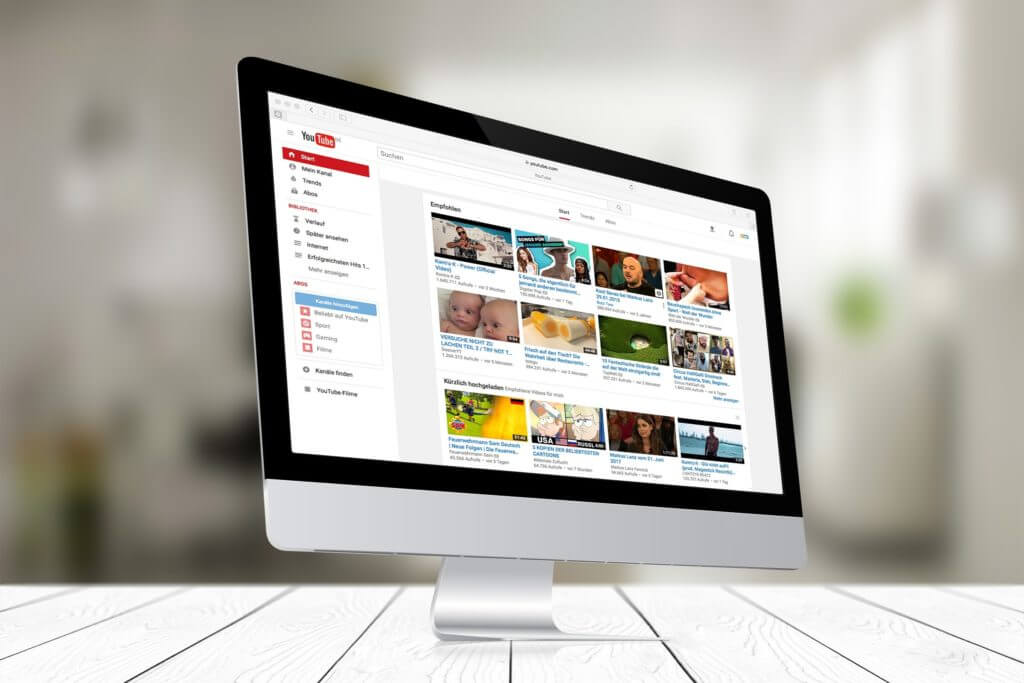6. Start Online Coaching and Sell Your Advice

Similar to selling your freelance services, you can also start selling your knowledge and advice in an area you specialize in as a coach or consultant. If you can bill yourself as an expert, there are tons of people out there willing to pay for your time.
Being an online coach or consultant is a great way to make money online, as instead of giving your client ongoing deliverables (like when you’re a freelancer), you’re teaching them to be better, faster, stronger than the competition. Your expertise becomes the product you’re selling.
Even better, if you can find ways to package your experience and coaching skills into an easily digestible program, you have the potential to significantly scale this business model.
Now, if you don’t know people who might want your coaching services, there are a number of online tools and communities that make it incredibly easy to find clients and teach, on just about any topic area you can think of. Community driven platforms like Savvy.is, Clarity.fm, and Coach.me provide you with a network of potential clients to interact with, as well an integrated payment solution.
And while it’s one of the most limited businesses as you’re only able to charge for the time you can provide, many online coaches make hundreds or even thousands for their packages.
It’s also one of the quickest ways you can get set up and start generating revenue. All you really need is an account with one of the online coaching communities I mentioned above and expertise to share.
7. Create Online Courses to Productize Your Knowledge

If you’re already an expert in a topic—either through your current job, freelance business, or coaching—you can package that knowledge into a high-value course and sell it for years to come.
And while building, launching, and marketing an online course does take a considerable amount of upfront effort, their earning potential is through the roof (especially compared to a lot of the other online ways to make money we’re talking about).
Courses and other knowledge products like e-books, are what’s called passive income. That simply means that once the upfront time and effort is put in, with just a bit of regular upkeep and marketing you’ll be able to continue to sell and make money from them for months and years.
So, how do you go about putting together your course? One of my favorite online course success stories comes from Bryan Harris of Videofruit, who built and launched an online course in just 10 days that made him $220,750!
To hit this awesome goal, Bryan followed a four-stage process to discover, validate, and launch his course:
Phase 1: Explore and discover the best topic for his course based on the most popular posts from his blog. This ensured he knew the content was already valuable to his audience.
Phase 2: Validate that people would actually pay for his course by surveying readers and securing pre-orders. (This is an important part that so many people forget. Never spend serious time building something unless you know there’s a paying audience for it).
Phase 3: Quickly write, record, and edit the course content. As he already knew there was demand, it made sense to create the content as quickly as possible. He could always go back and update or edit based on feedback from his initial students.
Phase 4: Launch the course to his email list. The success of your course comes down to getting it in front of the right people. And your own audience, no matter how small, is usually the best place to start. That said, you need to have a clear idea of your launch plan before you put it live.
Now, what if you don’t have a blog with popular posts? Or an email list to market to? Let’s look at how you can build your own online course with no previous experience:
- Start by taking other courses you’re interested in: Not only is this important competitor and opportunity analysis, but it also gives you an idea of how a course could or should look and feel. What’s the pacing like? Is it via email, video, in-person chats? Once you understand how you want your course to look, it’s time to decide what it should include. Those same courses are a great starting place. How can you make your course better or more interesting? Do you have experience others don’t?
- Choose your niche and check for demand: The golden course combination is when you can find an in-demand niche that aligns with your skills and unique experiences. A great way to do this is to use Google Trends, Google’s Keyword Planner and other key blogging tools to do keyword research and look for average monthly search volume for keywords related to your proposed course content. Are people actively looking for high-quality information about this subject? Of course, if you’re already creating content for a blog, coaching service, or a site like Medium, you can test demand this way for free just like Bryan did.
- Find your niche partners, collaborators, and champions: As you’re creating your course, look for notable people who are also creating content in the space. Look at how their businesses operate and incorporate that into your own plan. You can also reach out to any influencers and make them affiliates for your own course. This way, they’ll be incentivized to share your content with their own audiences (which can be a major way to generate your first sales—it helps if you're using one of the best CRMs for small business—and start building your own community!)
- Create a killer course experience: With your course validated and in the works, you need to figure out how people will take it. Most course creators choose to host their courses (after going down the path of learning how to make a website) on their own blogs. This way, they get all the value of bringing customers back to their site on a regular basis. I host my own courses from a subdomain on my own site so I can easily add more. The course experience is incredibly important as well. And after trying most of the solutions, I highly recommend Teachable—an online platform designed specifically for courses.
- Build your audience on a course community: If you’re just getting started building an audience for yourself and want to leverage communities already actively looking for content you can choose to host and sell your online course on a site like Skillshare or Udemy. These are easy, cost-effective ways to build an audience and test your niche to see if there’s demand for it.
- Market your course: The beauty of using a course to make money online is that you can continue to sell it for as long as you’d like. Look for niche communities on Facebook, LinkedIn, or Reddit that might benefit from your content. Guest blogging on relevant sites. Look for anywhere you might be able to get in front of the right people. With just a few hours a month you can continue to generate sales.
8. Launch a YouTube Channel to Entertain and Educate

While YouTube recently changed its monetization program, if you’re able to hit their new minimum bar of 1,000 subscribers and 4,000 hours of view time in the past 12 months, it’s still an incredible place to make extra money online.
YouTube is arguably the world’s second largest search engine (after Google) and is the third most-visited site in the world. In 2017, almost 5 billion videos were watched on YouTube every single day!
Rather than making money through subscriptions, YouTube channels are based on a traditional advertising system. Meaning the more viewers you get, the more you make. Once you’re approved for the YouTube Partner Program and can start including ads on your videos, with every 1,000 views, you will make approximately $2-$4. Which might not seem like a lot, but if you have 100 videos with 5,000 views a month each, that would be $1,000–$2,000 already. Just imagine if your videos start hitting millions of views!
Building a YouTube channel is a lot like starting a blog or website, except that you’re working in video—not writing. The first step is to choose what kind of videos you’re going to create. Most successful YouTube channels fall under one of two categories:
- Educational content: People always want to find the quickest way to learn something new. And YouTube searches including the phrase “How to” are growing 70% year over year, making YouTube an incredible place to teach what you know.
- Entertainment: Web series, product reviews, comedy sketches and pranks, vlogs, even video game walkthroughs—there’s so many different ways you can entertain people through your YouTube channel.
Next, you need to set up and build your YouTube channel. Your YouTube channel is your homebase for all your content. If you already have a Google account for Gmail or Google Drive, then you can use that to log-in to YouTube and start setting up your channel. Pick a username that works for you and is memorable (if you’re using an existing Google account you’ll have to edit your username in Google+).
You’ll also want to make your YouTube channel more easily found by adding relevant keywords under the “Advanced” section and picking your targeted country (where you think most of your viewers are). If you have a personal blog or site, add it as an “associated website.”
Now, it’s time to start creating and uploading content. Make sure you’re using a high-enough quality camera (most smartphones will work but I’d suggest at least having a tripod so your footage isn’t shaky), but don’t worry about being perfect at first. The beauty of YouTube is that you can continue to test out different content and styles as you find what works for you. Instead, stick to a regular schedule to build up your subscriber base.
You can optimize your videos to rank higher by experimenting with attention-grabbing descriptions and previews as well as using relevant tags. You need to stand out and make people want to click on your video.
As you start regularly putting out content, you’ll hopefully start to build a bit of an audience. But to start seeing real money from YouTube you need to market your videos elsewhere. Share your channel on Twitter and Facebook. Distribute videos anywhere else you can think of. Also, interact with comments and build a community around the videos you’re making so people will share it with their friends.
Once you hit the 1,000 subscriber/4,000 hour threshold, you can start monetizing your videos by selecting “Monetize with ads” under the Monetization tab of your channel. While it can take a while to build up a decent following for your YouTube channel, it can be a lot of fun to do as well as become a steady source of extra income.
9. Record a Podcast and Share Inspiring Stories

Podcasts are super hot right now, and for good reason. With how busy our lives are getting, more and more people are looking for passive ways to take in content. Which makes them both a great opportunity to build an audience and to make money online.
And while it will take time to build up a big-enough audience to attract advertisers and other ways to make extra income from your podcast, the opportunity is there. John Lee Dumas interviews entrepreneurs seven days a week for his podcast Entrepreneur on Fire and now makes more than $200,000 a month from it. In fact, John publishes all his income online and showed that he’s made almost $13 million since launching in 2012.
The podcast market is constantly looking for new, quality content. And luckily for anyone trying to get started, it’s now easier than ever.
Starting a podcast, like making a YouTube channel or blog, comes down to telling interesting stories and building an engaged audience. I’m probably sounding like a broken record by now, but you need a niche that you’re interested in and there’s already a demand for. Come up with a list of topics you’d like to talk about and then search iTunes charts, Google Trends and other podcast research sites like cast.market to see what’s currently out there and popular.
Next, you’ll need the right tools. You can be as complicated or simple as you want depending on your comfort with audio equipment, but at the minimum you’ll want a microphone and software for recording your voice. Companies like Behringer, Blue, Focusrite, and others sell studio-quality plug-and-play podcast setups that can get you recording today.
Now, it’s time to plan out your show. If you’re doing an interview-style show, you’ll now want to start getting some guests involved. You can use your existing social network to reach out to people you already know or are connected with on Twitter or Facebook. You can also head to Medium or Amazon to find authors or experts on topics specific to your niche.
Once you’ve gathered a list, put together a template outreach email (as you’ll be doing this over and over) that’s short and clear with expectations. Tell your potential interviewee who you are, what your podcast is about, and what you’re asking of them. Do a few test interviews with friends and family to make sure everything is being recorded at the quality you want and then book your first episode.
If you like learning new software or are experienced with audio editing, you can put the show together yourself. Otherwise, there are lots of services you can find that will help edit and build your show on place likes UpWork and Fiverr.
Congrats! You now have a podcast episode that’s ready to be uploaded to iTunes, SoundCloud, or anywhere else and promoted alongside the rest of your content!
The last step is deciding how you’ll market and monetize your podcast. The larger of an audience you have, the more chances you have for monetizing it. Choose the best website builders to create a simple site for your show and start sharing episodes to your network. When you’re ready to monetize there are a few options you can choose from:
- Traditional advertising (sponsors)
- Selling your own products
- Donations and crowdfunding
- Selling “subscriber-only” content
- Putting on live shows
As Aaron Mahnke, creator of the Lore podcast says:
“I always tell podcasters to use as many streams as possible. Don't just sell ads on your show. Don't just sell T-shirts. Don't just do crowdfunding. Do all of it. Combine it and find the right mix, and together it adds up to something that's stronger and more dependable.”
10. Join a Remote Company Part-Time (or Full-Time)

While most of the ideas for making money online we’ve covered so far can be done on the side, if you’re looking to completely change your career and start working online there are thousands of companies looking to hire who don’t care where you are.
More and more companies and startups especially are embracing remote work—where you use online collaboration and communication tools to do your work from wherever you want. And you don’t have to be a 20-something hotshot designer or coder to reap the benefits of working remotely. Many remote positions are for customer support positions or other customer-facing positions that don’t require specialized skill sets.
Better yet, they aren’t all full-time either, meaning you can find a remote company and job that works as a way to make extra money online.
If you’re interested, here’s a list of some of the best places to find a remote job today:
- Flexjobs
- SolidGigs
- We Work Remotely
- Remote.co
- Remotive
- Skip the Drive
- Virtual Locations
- Remote OK
- Staff.com
- Working Nomads
- Jobspresso
- Europeremotely
- Jobscribe
- WFH.IO
- Outsourcely
- PowerToFly
- Landing.Jobs
- AngelList
- Authentic Jobs
- The Muse
- Idealist
- Indeed
Here are even more of my picks for the best remote jobs websites where you can find high quality full-time flexible gigs.
...
Now, let's talk about the rest of my picks for the best ways to make money online.
If you’re looking to build a new career online or test your way into launching a small business, the first ten ways we just ran through are some of the best, long-term plays for making money online. However, for a lot of people (myself included), you probably want to find other, quick online business opportunities where you can start seeing a return faster.
Which is a great idea. Of course, making money online takes patience and effort. But there are lots of proven ways you can get started making money today without the long lead time of building a startup or getting your own freelance business off the ground.
Also, no matter what your career, it’s important to diversify where your income is coming from. This means having multiple revenue streams from multiple sources, like selling your freelance services, affiliate and passive income, as well as coaching and other online odd jobs.
Not only will this multiply the money you’re bringing in in a serious way, but it protects you against any sudden changes in the market or in your business. Remember that old saying about putting all your eggs in one basket? A few hours a week committed to just one or two of the following opportunities will put you in a much stronger position to be financially safe and independent.
No comments:
Post a Comment